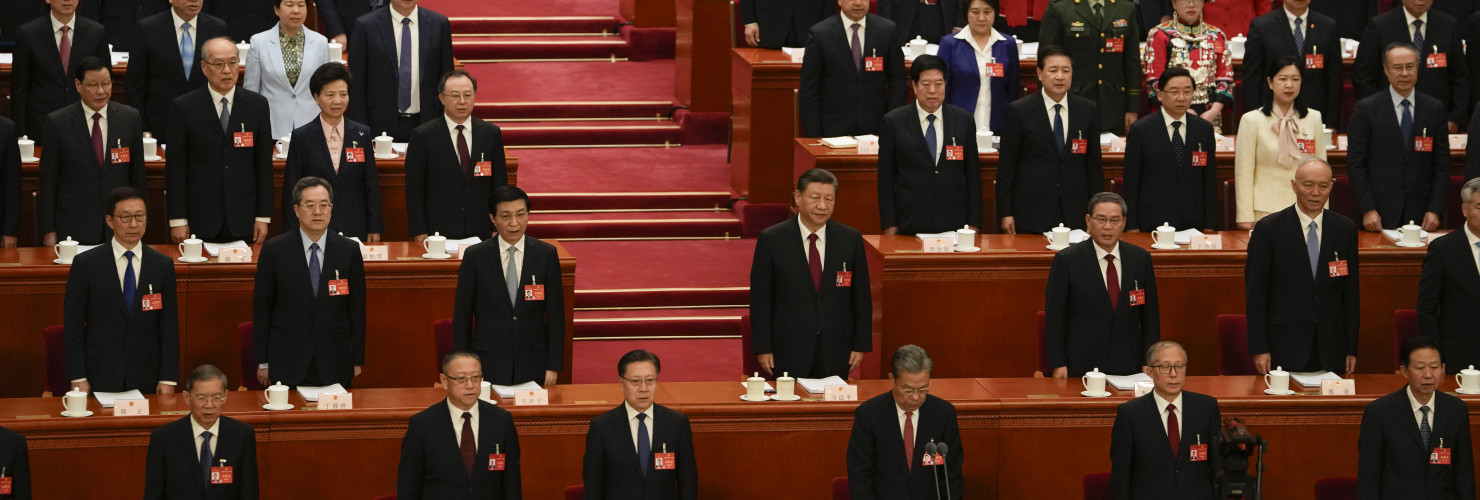

The “missing” Third Plenum suggests Xi is sticking to his plan
The CCP’s Central Committee did not outline new economic reforms ahead of the National People’s Congress. Alexander Davey says the party leadership’s trust in Xi appears strong.
How strong is Xi Jinping? This question has occupied China watchers for months as the Chinese Communist Party’s (CCP) highest body, the 200-strong Central Committee, has yet failed to meet for the third plenary session of its 2022-2027 term. The CCP leadership has traditionally used the so-called Third Plenum to outline socio-economic and political reforms for the next five years – which is why the meeting had been highly anticipated and expected to take place before the National People’s Congress (NPC) which started today.
For the first time in more than thirty years, the Third Plenum will occur outside the CCP’s established schedule, leaving the annual meeting of China’s legislature, the country’s highest state organ, with no explicit mandate to tackle reforms as economic challenges mount. To many commentators, this suggests that Xi and his leadership team are uncertain about the direction in which to steer the country's economy.
The “missing” Third Plenum could be a sign of confidence
But the “missing” Third Plenum could be a sign of confidence on the part of Xi and his fellow party leaders that all that needs to be said about economic strategy has been said. In this reading, they are sticking to a plan whose foundation was laid by the 2013 Third Plenum of the Central Committee of 2012-2017. By acknowledging the “big problem” of “unbalanced, unco-ordinated and unsustainable development” and weakness in “scientific and technological innovation,” it ushered in what is now known as “the new development concept.”
Only a year after becoming CCP leader and eight months after becoming head of state, Xi in November 2013 was already preparing China for its current shift from an economic model prioritizing rapid growth through job-intensive mass manufacturing to higher-quality growth through more innovative industry. A decade later, Xi may not have seen the need for another Third Plenum to outline new reforms because, to him, the guidelines set out in and after 2013 remain the guiding principles of his economic course, albeit with many gaps left to fill.
Xi is arguably under greater pressure to implement his visions
With the new development concept to guide economic development and “Chinese style modernization” since 2021 charting the course for “the great rejuvenation” of the country at home and abroad, Xi is arguably under greater pressure to implement his visions – and mobilize the giant beast that is the party state – than to present more of them. But even here he has become less reliant on the CCP’s Central Committee ever since its Third Plenums of 2013 and 2018 founded and upgraded a separate CCP body to supervise reform policies.
The CCP’s Commission for Comprehensively Deepening Reform (CCDR), as it is now called, has become Xi’s main vehicle for steering policy making. In charge of supervising party departments and government ministries, it is a perfect illustration of how Xi has centralized power in his own hands by melding CCP and state in new bodies that report to the same “core leader.” Despite discipline and enforcement mechanisms designed to help regular party cadres stay the course, the “missing” Third Plenum might not be sign of weakness or hesitation, but one that the party leadership trusts Xi’s vision and implementation process.
This may be leading to a shift in how long-term economic reforms are announced and implemented under Xi. Instead of the Third Plenum, the CCDR and other party-state hybrids in Xi’s central leadership system – notably the Central Financial Commission, Central Economic Work Conference and Central Financial Work Conference – may give more reliable signals about the direction of economic policy. While the CCP Central Committee convenes for seven plenums in five years, the third is only by convention devoted to economic policy.
Although the Chinese economy is battered by stalled exports, low consumer demand and a real-estate sector in crisis, there are no signs that Xi’s commitment to the new development concept and its strong emphasis on scientific, technological and industrial innovation is wavering. If successful, this approach would not only transform China into a high-income economy and global leader in science and technology, it would also solve many of the problems that are currently contributing to the country’s economic stagnation.
And it would counteract US-led efforts to hinder China’s technological progress by placing export controls on Western highest-tech products. They have turned Beijing’s vision of an innovation-driven and self-reliant economy into a matter of geopolitical survival – and likely increased Xi’s urgency to realize the new development model. Last year’s NPC praised Chinese-style modernization. The only question is in what ways it will this year push an optimistic narrative to buy time for the CCP leadership’s economic ambitions to bear fruit.
